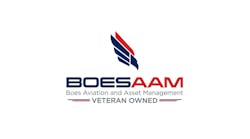PARIS, France | June 21, 2017
Concept Laser (a GE Additive company) and LAUAK (a French aeronautical company) have signed a Letter of Intent (LOI) to launch an alliance between the two entities. Lauak will invest in Concept Laser's additive machines to be a reference customer for Concept Laser technology and Concept Laser will work closely with Lauak to implement additive processes and design new products.
"Lauak see the potential of additive manufacturing and I'm delighted they've chosen Concept Laser equipment to help them on their journey," said CEO of Concept Laser, Frank Herzog. "We will support them with equipment, processes and people to allow them to fulfil their objectives."
Concept Laser will support Lauak during the implementation phase of the equipment into their manufacturing process. Lauak will also present the Concept Laser machine to reference customers in their showroom, including the presentation of test objects for demonstration purposes. Concept Laser and Lauak will collaborate to redesign components from the Lauak portfolio.
Mikel Charritton, CEO of Lauak said: "We see the huge potential in additive manufacturing and we want to use this technology to complete and improve our current manufacturing processes, as well as the manufacture of new components for the aviation industry."
Additive manufacturing (also called 3D printing) involves taking digital designs from computer aided design (CAD) software, and building them on an additive machine, layer by layer from metal powder. Additive components are typically lighter, more durable and more efficient than traditional casting and forged parts because they can be made as one piece, requiring less welds, joints and assembly. Because additive parts are essentially "grown" from the ground up, they generate far less waste material. Freed of traditional manufacturing restrictions, additive manufacturing dramatically expands the design possibilities for engineers.



